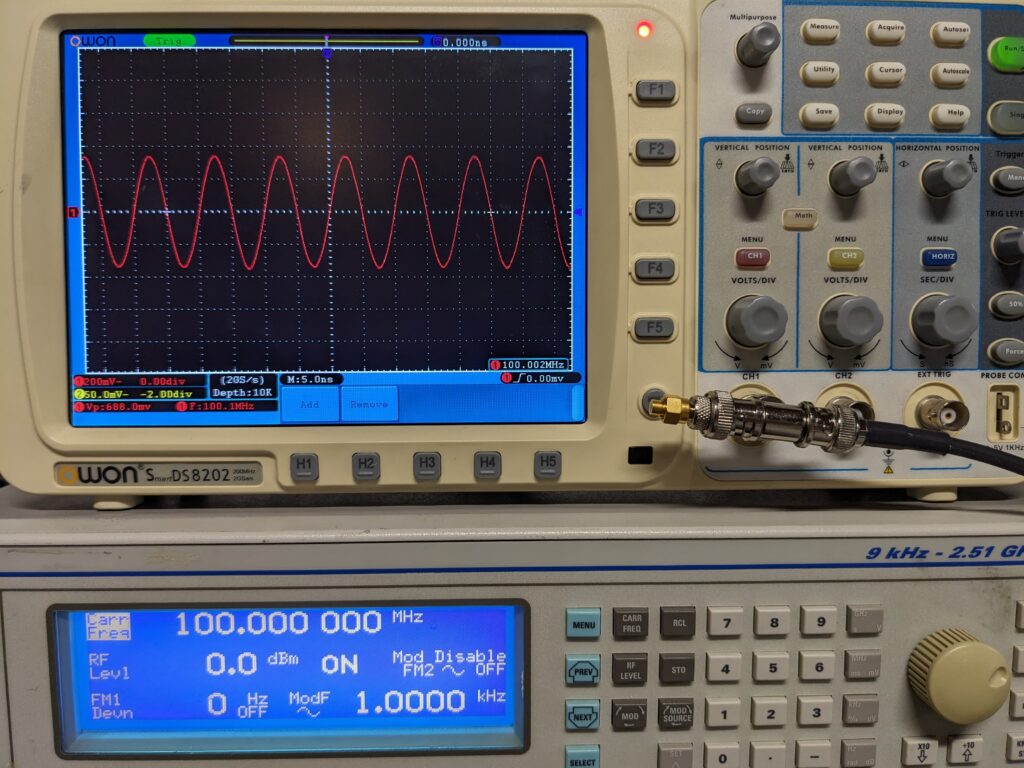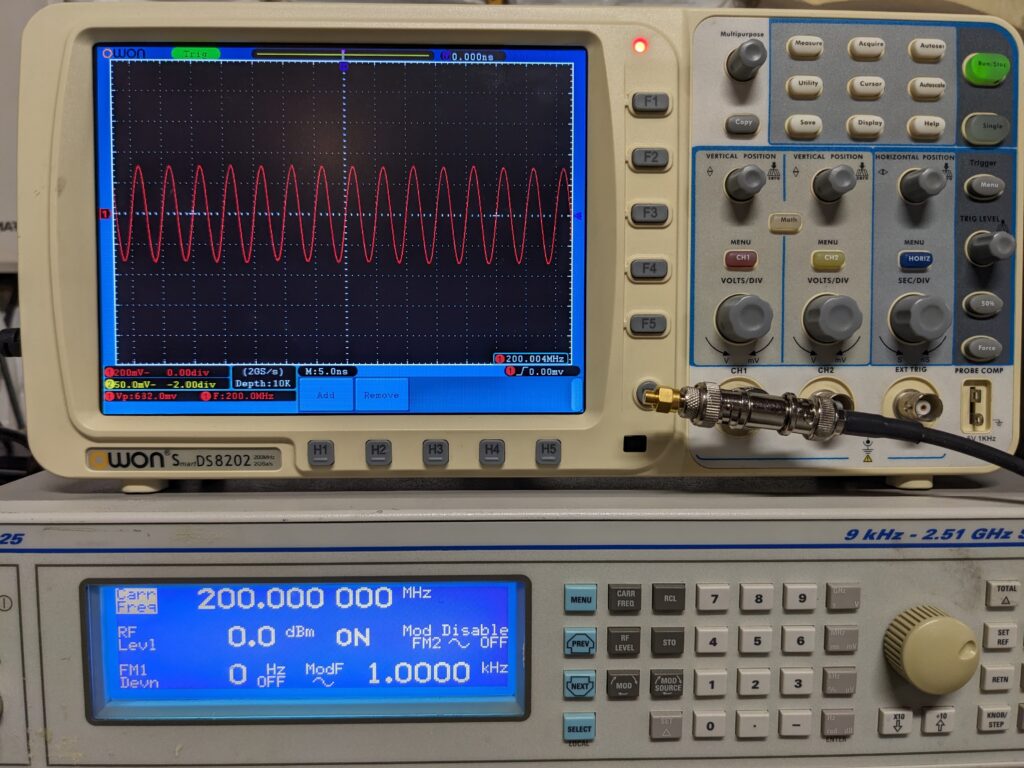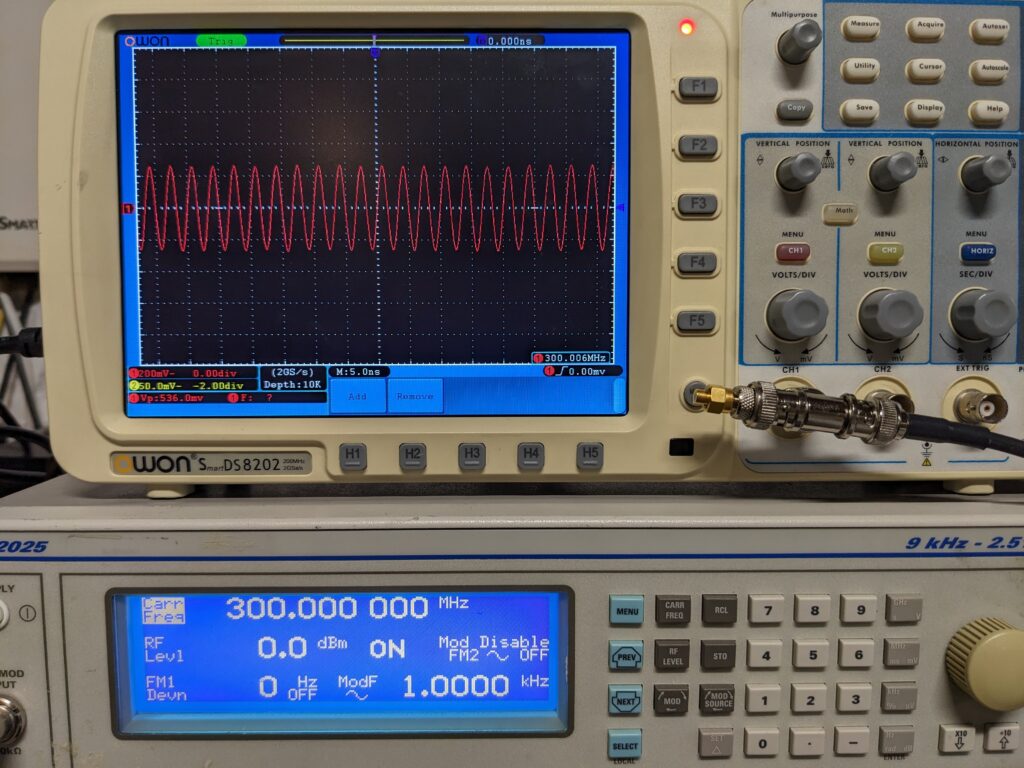The price of oscilloscopes goes up quickly above 100MHz bandwidth, often placing them out of the budget of hobbyists and small businesses. The analog bandwidth of a scope is defined as the frequency at which amplitude is reduced by 3dB (roughly 30%)
Most oscilloscope lines offer a variety of bandwidth options (at increasing prices) such as 50, 100, 200MHz or 100, 350, 500MHz. In many cases, those are really the exact same scope hardware (the highest bandwidth) but are limited in software to a lower bandwidth. This allows manufacturers to address a broader range of potential customers (they can sell the 100MHz scope to individuals or small companies without undercutting the big margins of their 500MHz scope sales to large companies).
Some manufacturers have made it possible for hobbyists to unlock the higher bandwidths. Doing this voids any warranty or calibration of course, and so most labs or large companies simply won’t do this and if you choose to do it, it’s at your own risk. However, I have done this successfully with scopes from Siglent (SDS1104X) and Tektronix (TDS3xxx) and the results have been pretty good.
TDS3K scopes are older Tektronix models that used to cost a fortune (Tek was long the king of the oscilloscope hill and my favorite). The TDS3K line came in 100, 350, and 500MHz models. Fortunately, you can hack any TDS3K scope to 500MHz. For info on how to do this, look to the always excellent eevblog (here). Note that you will need to downgrade the firmware to 3.39 in order to perform the hack. In a nutshell:
- Install a communications module in the back slot
- Configure for 9600,8,N,1 (local echo on is helpful)
- Check current version: *IDN?
- PASSWORD PITBULL
- MCONFIG TDS3052 (or whatever model you’re upgrading to)
- Reboot the scope
Note too that there are downsides to the TDS3K line like calibration is stored in battery backed RAM (and the battery will eventually die). In general, to continue to use a scope of this age, you should plan to re-cap it (replace all electrolytics) and replace the battery-backed RAM module with a new one.
Siglent and Owon are Chinese companies that make a lot of test gear that isn’t quite up to Tek or Keysight standards, but still offer a great deal of bang for the buck and the Siglent products are often hackable. For info on how to hack the Siglent SDS110x scopes you can also refer to eevblog.
An important question is: how do these scopes perform after the hack, so I tested a Tektronix TDS3012 (100MHz) before and after hacking it to a TDS3052. I also tested a TDS3032 I had previously hacked to TDS3052, a Siglent SDS1104X hacked from 100 to 200MHz, and compared them with an unhacked TDS5054B (500MHz) and an Owon SDS8202 (200MHz). In each case I supplied a 0dBm tone from an IFR 2025 RF signal generator through an admittedly less-than-ideal but short coax cable with BNC connectors. For the scopes without internal 50-ohm termination, I used a BNC through terminator and a 6dB attenuator.
A 0dBm signal terminated in a 50R load should be 632mV peak-to-peak. At the bandwidth limit of the scope, that signal should be reduced by 3dB or roughly 30% (-3dBm = 448mV p-p):
| MHz: | Term | 10 | 50 | 100 | 200 | 300 | 350 | 400 | 500 |
| TDS3012 (before hack) | Int | 562 | 320 | — | — | — | — | ||
| TDS3012 (hacked) | Int | 666 | 648 | 644 | 640 | 606 | 580 | 554 | 510 |
| TDS3032 #1 (hacked) | Int | 680 | 665 | 660 | 644 | 630 | 604 | 578 | 530 |
| TDS3032 #2 (before hack) | Int | 641 | 627 | 626 | 598 | 563 | 546 | 511 | 457 |
| TDS3032 #2 (hacked) | Int | 658 | 640 | 637 | 631 | 619 | 604 | 576 | 555 |
| TDS5054B | Int | 662 | 642 | 630 | 627 | 593 | 575 | 560 | 566 |
| SDS1104X (hacked) | BNC | 650 | 638 | 600 | 514 | 360 | 264 | 169 | 57 |
| SDS8202 | BNC | 680 | 672 | 664 | 608 | 512 | 424 | 300 | — |
It’s clear that the hacks really do increase the available bandwidth. In the case of the TDS3K scopes, to greater than 500MHz, making them truly the equivalent of TDS305x. I measured a 700MHz signal on a hacked TDS3032 at 466mVp-p so the 3dB bandwidth was even higher than that! The hacked scopes also show the sample rate at 5Gs/s whereas before the hack they top out at 1.25 or 2.5GS/s.
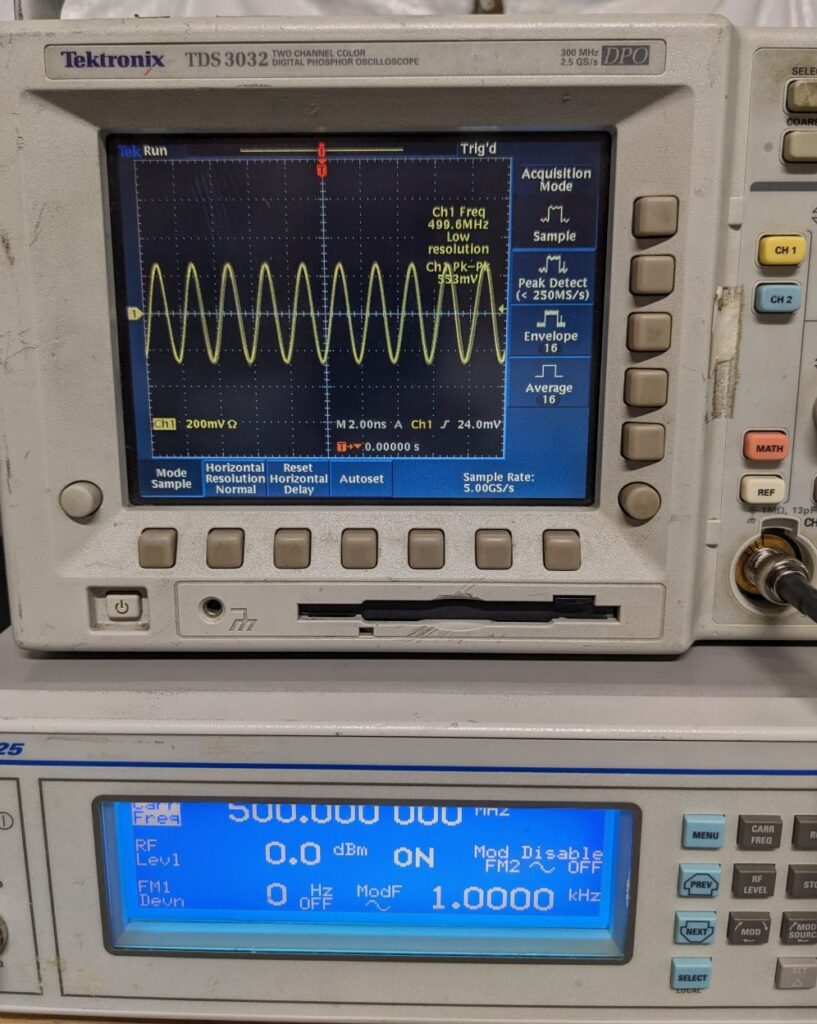
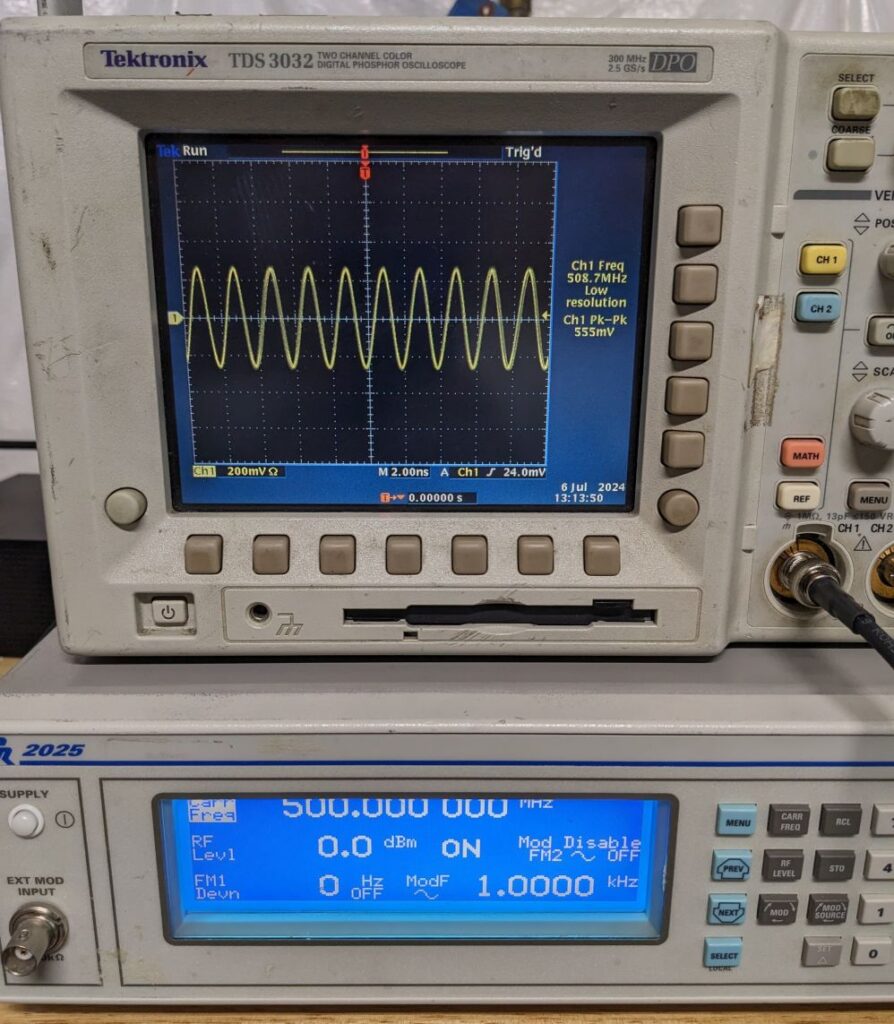
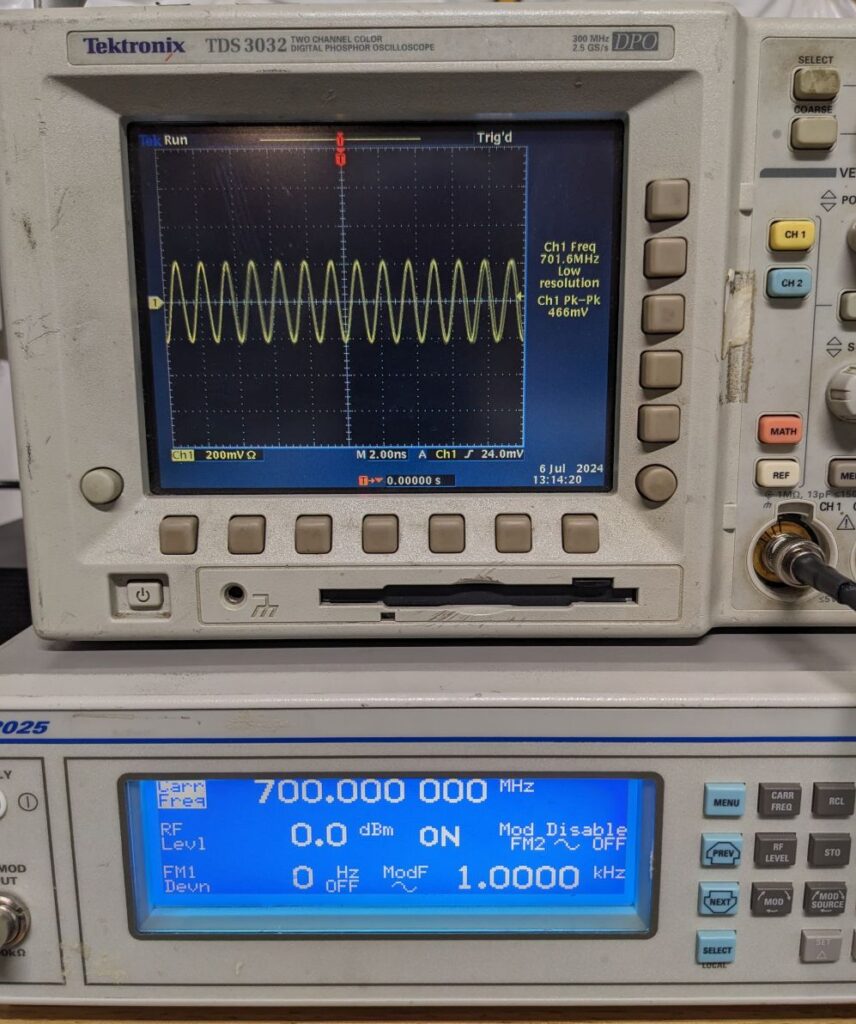
The Siglent SDS1104X (nominally 100MHz) hack also extends its bandwidth to 200MHz; mine was down -1.78dBm at 200MHz and still slightly better than 3dB at 235MHz (-2.88dBm). The trigger was able to lock cleanly out well past 400MHz and measurements remained accurate. Note: the SDS1104X does not offer internal 50R termination so measurements were made through a 6dB pad (reduces signal by half, probe set to 2x) and 50R through terminator.
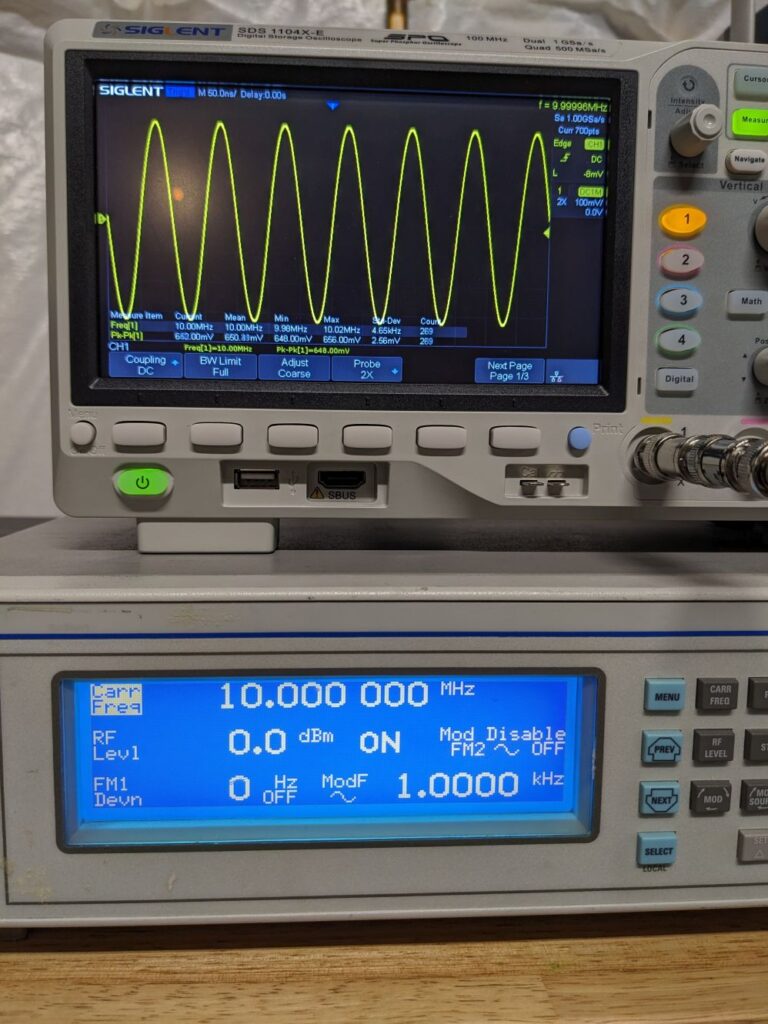
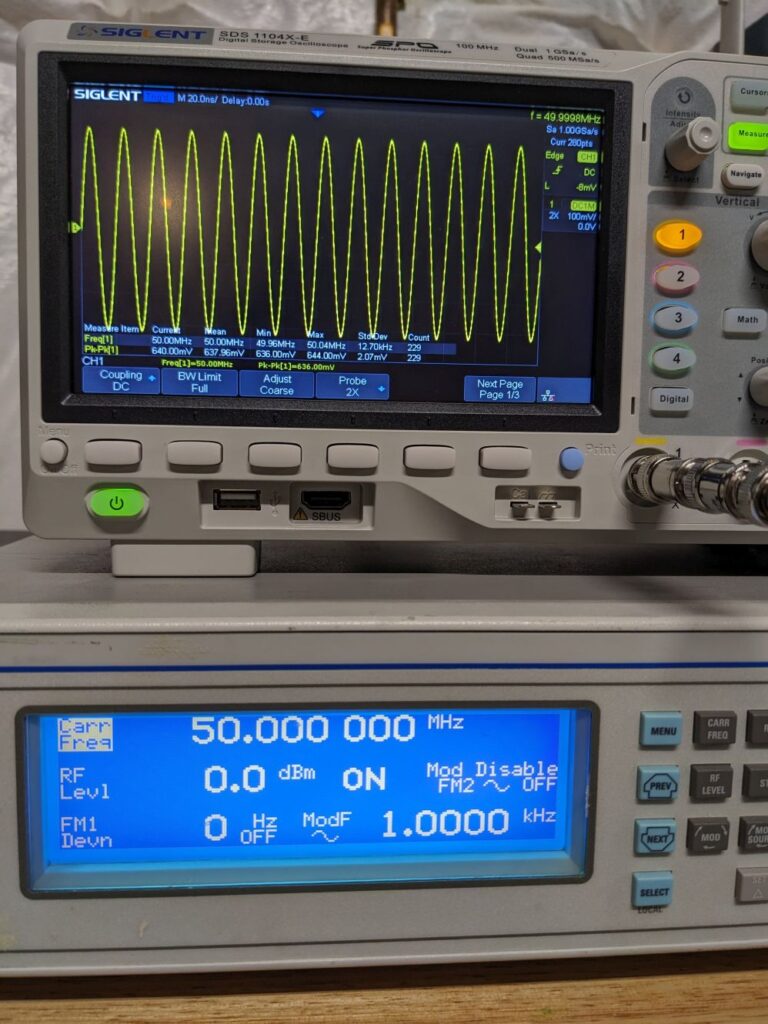
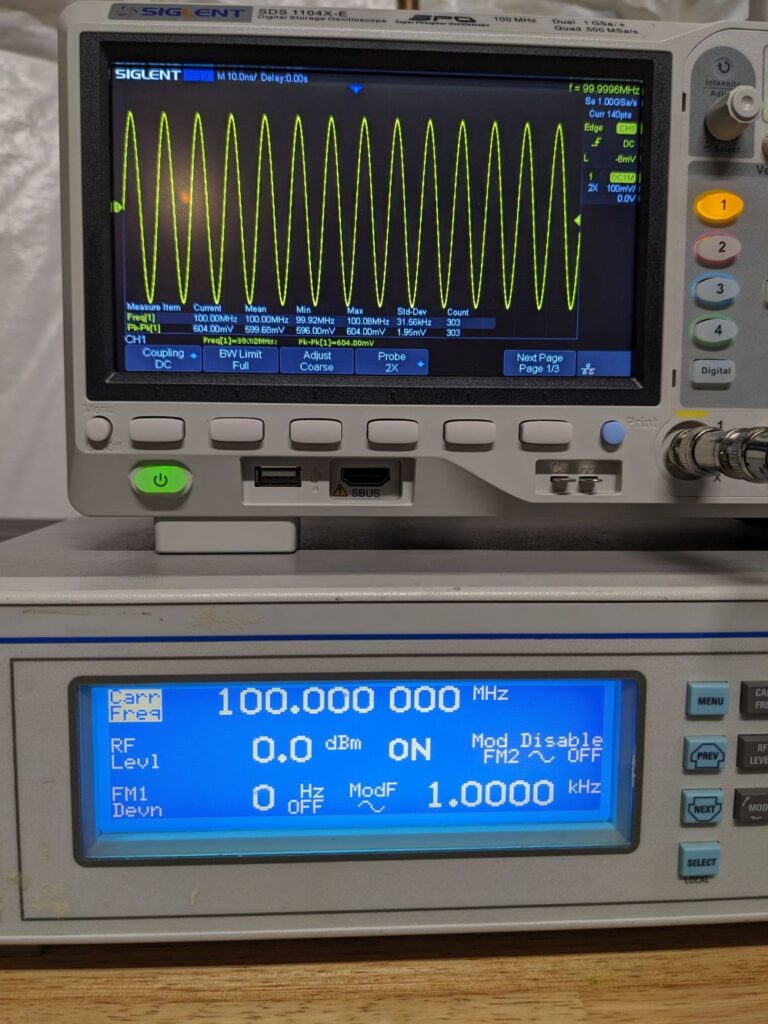
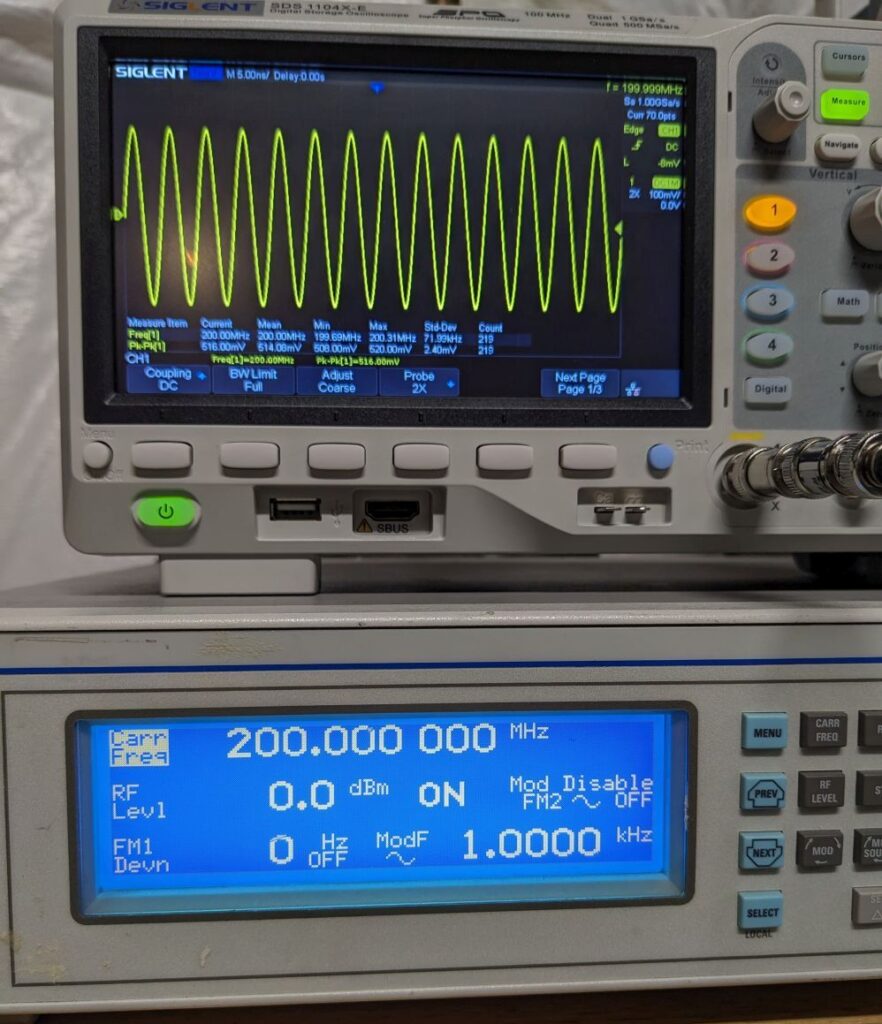
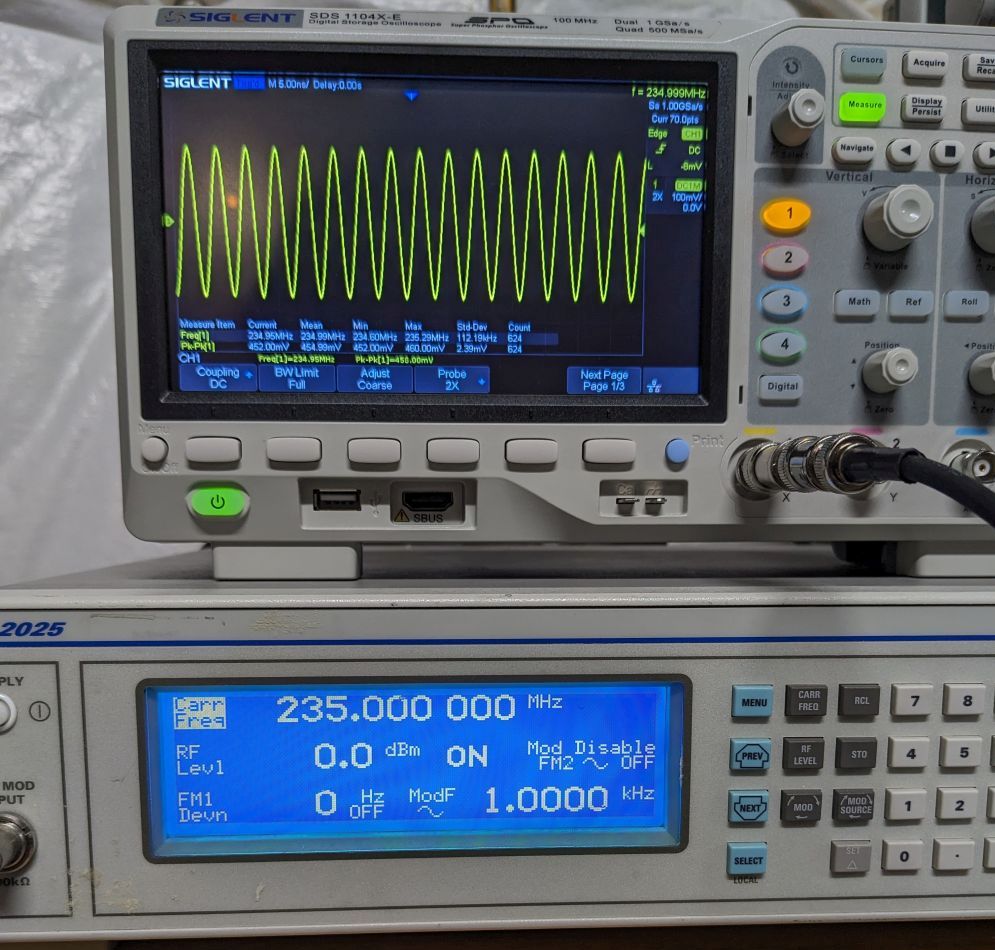
The old Owon SDS8202 (nominally 200MHz) did remarkably well out past 300MHz, easily outperforming the hacked SDS1104X. Owon makes nice analog front ends! Note that frequency measurement stopped at 200MHz even though the scope was clearly able to trigger on and lock to signals out to 400MHz.
